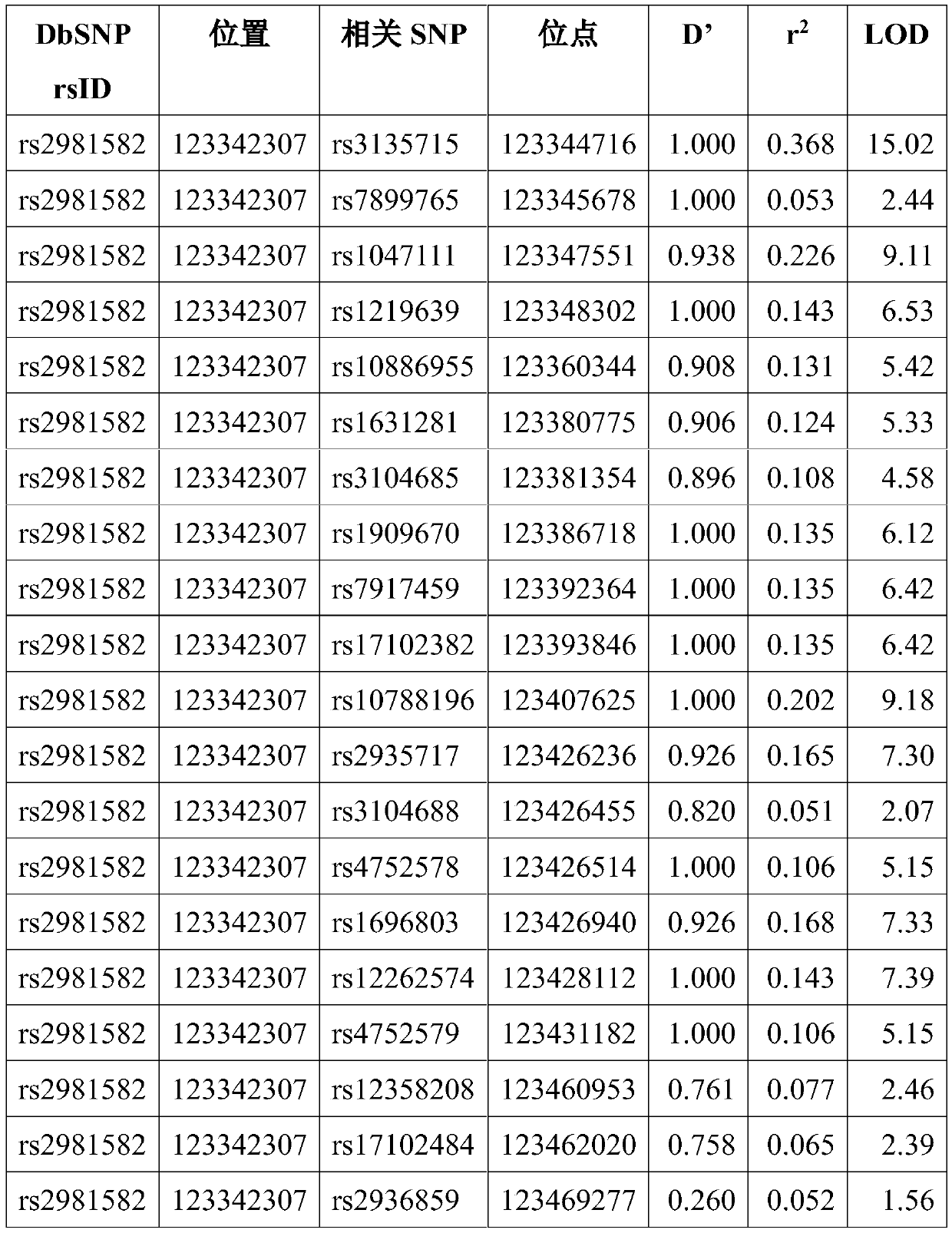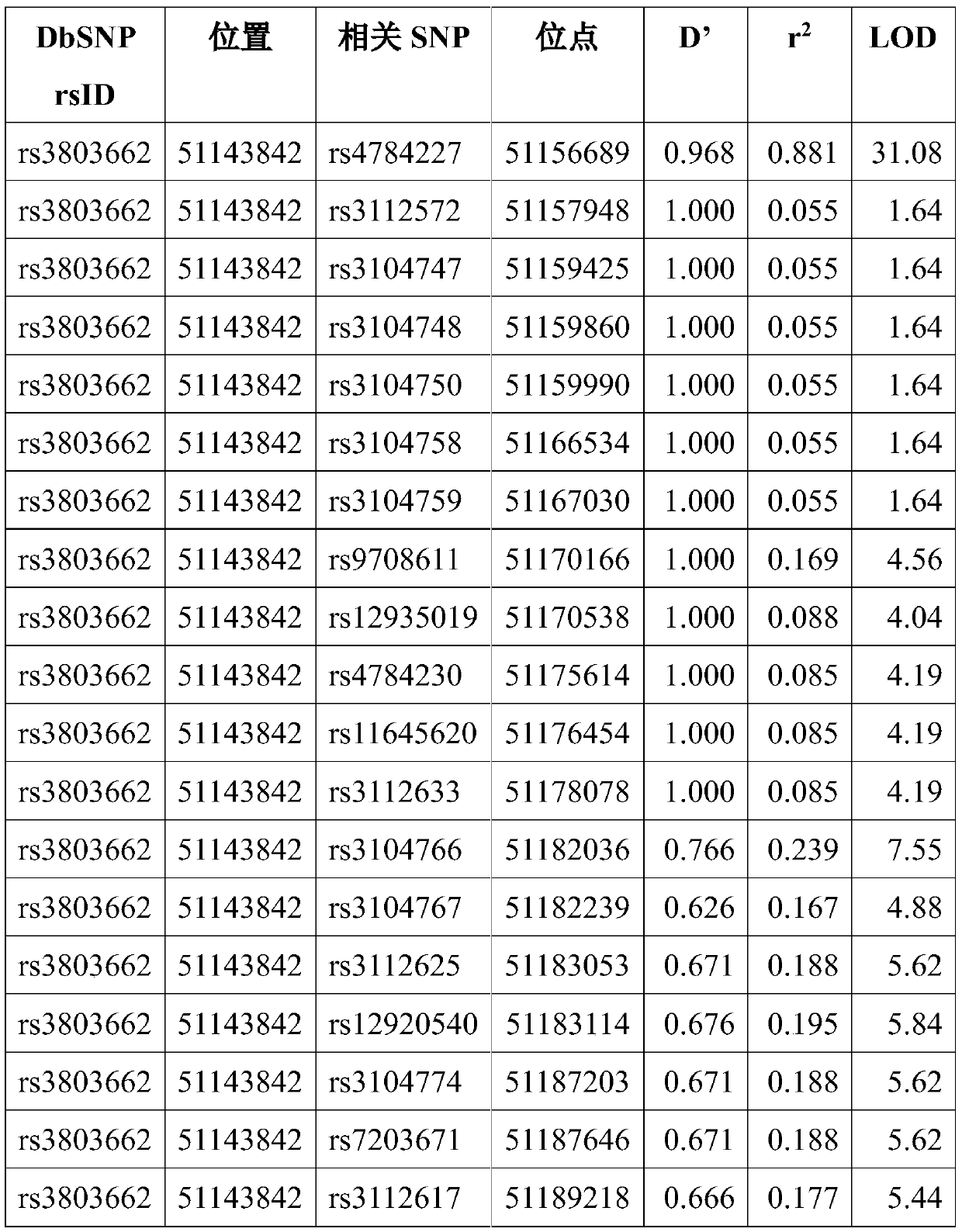Methods of assessing risk of developing breast cancer
A technique for breast cancer, risk, applied in the direction of mammography, biochemical equipment and methods, drugs or prescriptions
- Summary
- Abstract
- Description
- Claims
- Application Information
AI Technical Summary
Problems solved by technology
Method used
Image
Examples
Embodiment 1
[0287] Example 1 - A first clinical risk assessment, a second clinical risk assessment based at least on breast density and genetic risk combination of risk assessments
[0288] The inventors found that a breast cancer risk model combining a first clinical risk estimate, at least a second clinical risk estimate based on breast density, and a genetic risk estimate provides better risk discrimination than any currently available individual risk model.
[0289] The model was developed using 800 breast cancer subjects and 2000 control subjects and cross-validated using a second independent cohort comprising 1259 breast cancer subjects and 1800 controls.
[0290] From a public health perspective, the key question is the extent to which risk factors in a given population distinguish breast cancer subjects from control populations. This can be determined from the risk gradient, best expressed as the change in odds per adjusted standard deviation (OPERA) of a risk factor in the po...
Embodiment 2
[0297] Example 2 Absolute Risk Estimation
[0298] In the case of cancer risk assessment, it is often more useful to provide an absolute estimate of cancer risk (ie, a risk related to an individual rather than a population relative risk). Absolute risk is usually described as remaining lifetime risk or short-term risk, such as 5-year risk or 10-year risk (which describe the risk of developing cancer in the next 5 or 10 years, respectively).
[0299] Absolute risk of breast cancer can be derived from risk models by combining specific incidence and competing mortality rates of breast cancer in the population under consideration, which allows estimating the risk of dying from causes other than breast cancer.
[0300] The following specific data domains can be included in the model to determine the absolute risk of breast cancer:
[0301] Details based on age, ethnic group, height, weight, menarche, menopause, childbirth history, use of contraceptive methods, use of hormone rep...
PUM
 Login to View More
Login to View More Abstract
Description
Claims
Application Information
 Login to View More
Login to View More - R&D
- Intellectual Property
- Life Sciences
- Materials
- Tech Scout
- Unparalleled Data Quality
- Higher Quality Content
- 60% Fewer Hallucinations
Browse by: Latest US Patents, China's latest patents, Technical Efficacy Thesaurus, Application Domain, Technology Topic, Popular Technical Reports.
© 2025 PatSnap. All rights reserved.Legal|Privacy policy|Modern Slavery Act Transparency Statement|Sitemap|About US| Contact US: help@patsnap.com



